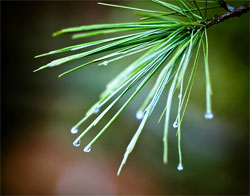The Fantastic Four – 4 Essential Wild Edible Plants that May Just Save Your Life
http://www.tacticalintelligence.net/blog/the-fantastic-four-4-essen...
I thought this website might be useful to everyone.
I thought this website might be useful to everyone.
Tags:
Replies to This Discussion
-
Permalink Reply by honey jane rodgers on April 21, 2010 at 10:42pm
-
thank you doanh!! what a great website, the 4 essential plants are so prevelant, but who knew?! i'm collecting dandelion seeds now from around the neighborhood ( i live in the city, but with more nature than most), next it will be clover flowers and seeds... keep passing on this valuable information :) love, honey jane
-
-
Permalink Reply by Tamzin Kay on April 22, 2010 at 12:24am
-
Yeah this site is great Doaonh, reminded me how great pine is as a survival tree since they are so plentiful
http://www.tacticalintelligence.net/blog/how-to-eat-a-pine-tree.htm -
-
Permalink Reply by Steve G on April 23, 2010 at 3:26pm
-
Jerusalem Artichoke, Amaranth (pick a variety with edible leaves and seeds), Miner's Lettuce and Nettle are other wild plant alternatives that have weedy characteristics (i.e., easy to grow) and which have served as "staples" to indigenous populations. I just completed reading a book with a lot of info in this regard and will post additional suggestions in the near future.
-
-
Permalink Reply by Insky Jedburgh on April 24, 2010 at 11:13am
-
Thanks for posting this, very useful info. Just the other day while scouting out a potential safe camp location I happened upon a young white pine and decided to try out the inner bark.
I had foolishly forgotten my knife, and so I had to use a house key to carve off a small test strip of bark from the tree. The inner bark did have a sweetish flavor, though it was very fibrous, so I mostly chewed it like gum, extracting the softer meat from it that way. I was pleasantly surprised by the flavor, though I would prefer to harvest a larger chunk next time and pound it until it was softer, and even try frying it as I have seen others recommend.
As long as those white pines survive the environmental changes of a pole shift, I would expect a ready supply of starchy, vitamin laden food close at hand whenever we needed it.
-
-
Permalink Reply by Kelly on April 24, 2010 at 7:49pm
-
Thank you for this post Doanh. Don't underestimate finding good information in traditional places like your local Cooperative Extension Service (4-H). This link is to information on wild foods written by a Native American Cooperative Extension Service Agent named Tamara Walkingstick. She has been teaching children in the tradition of her ancestors about wild edible foods here in Arkansas for many years.
http://www.arnatural.org/wild_foods.htm
Program Description: Eating on the Wild Side
As part of Tamara's 4H youth education program, she teaches kids about trees and the environment by having them learn how Native Americans used certain trees and plants for food. For example, which oak tree makes tastier acorns? What can you do with sumac and elderberry? What does acorn bread really taste like? She will be preparing a couple of “wild” dishes for the audience to sample including cream of sheep sorrel soup, persimmon cinnamon rolls, acorn cookies, and “wild” pizza. She concludes her presentation by reminding the audience that each of us carries a deep understanding our environment somewhere in our roots. The challenge is to not forget it and to pass it on.
Tamara has worked for the University of Arkansas , Division of Agriculture, Cooperative Extension Service as an Associate Professor of Extension Forestry since 1996. Her state-wide responsibilities include general forest management education for adults and youth. She completed her Ph.D. in Forest Economics and Sociology of Natural Resources at the Auburn University , her MS at Oklahoma State University , and her BS at the University of Arkansas-Fayetteville. After receiving her BS, she served in Nepal as a Community Forestry Volunteer for US Peace Corps. Tamara serves on several boards including the Arkansas American Indian Center , the Arkansas Urban Forestry Council, and the National Network of Forest Practitioners. Dr. Walkingstick is a member of the Cherokee Nation of Oklahoma. -
-
Permalink Reply by Dee Nguyen on April 27, 2010 at 8:31am
-
You're welcome everyone and thank you for the links!
-
SEARCH PS Ning or Zetatalk
Nancy Lieder, Emissary of the Zetas.
https://poleshift.ning.com/xn/detail/3863141:Comment:1168188
Awakening to the Alien Presence ZetaTalk
The truth will likely never to be known to the public but be washed away in the Nibiru panic soon to engulf the world.
The Worst of the Cover-Up
https://poleshift.ning.com/profiles/blogs/the-worst-of-the-cover-up
Main Establishment Lies
https://poleshift.ning.com/profiles/blogs/main-establishment-lies
Donate
© 2025 Created by 0nin2migqvl32.
Powered by
![]()